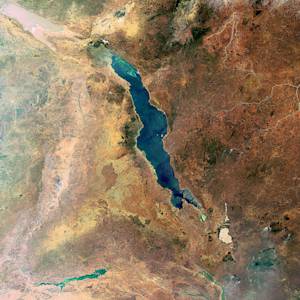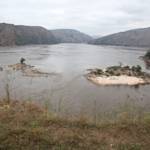Okavango Delta
2023 CE • Southern Africa
"At the height of Botswana’s six-month dry season, rainwater from Angola’s lush highlands spills into the heart of the Kalahari Desert in southern Africa, setting in motion an ecological spectacle unlike anywhere else on Earth. With the influx of 2.5 trillion gallons of water, the Okavango Delta—a permanent swamp surrounded by one of the continent’s driest expanses—doubles in size. Fueled by the promise of a fertile floodplain, some 200,000 large mammals return to the delta, now an oasis roughly half the size of Massachusetts. The floodwaters usher in more than 700 species of mammals, birds, fish, amphibians and reptiles. African fish eagles soar above prides of lions and the continent’s largest population of savanna elephants. Wild dogs prowl through thorn scrub as cheetahs stalk warthogs and wetland antelopes. Hippos and Nile crocodiles lurk among reeds and papyrus. The delta hums with life for several months until the floodwaters evaporate or recede into the red desert sands . . . [T]he majority of people rely on livelihoods like agriculture, fishing, forestry and tourism that draw on the region’s natural resources. The delta itself is largely protected by a mosaic of game reserves, wildlife management areas and community trusts, but most of the biodiversity-rich lands, rivers and lakes in Angola that feed it are not. And as the country emerges from decades of civil war, more than 50 large-scale water infrastructure projects are under consideration, including dams for hydropower, commercial irrigation works and municipal water storage. These projects could divert floodwaters away from the delta, disrupting one of the most magnificent large-animal migrations in the world and crippling the livelihoods of the people who depend on it."
"African Oasis: The Okavango Delta," The Nature Conservancy Magazine, February 27, 2021.
Image: Diego Delso, CC BY-SA 4.0, via Wikimedia Commons


Learn about Maya Lin’s fifth and final memorial: a multi-platform science based artwork that presents an ecological history of our world - past, present, and future.

Discover ecological histories and stories of former abundance, loss, and recovery on the map of memory.

Learn how we can reduce our emissions and protect and restore species and habitats – around the world.

See how art can help us rethink the problems we face, and give us hope that each one of us can make a difference.

Help make a global memorial something personal and close to home. Share your stories of the natural world.

